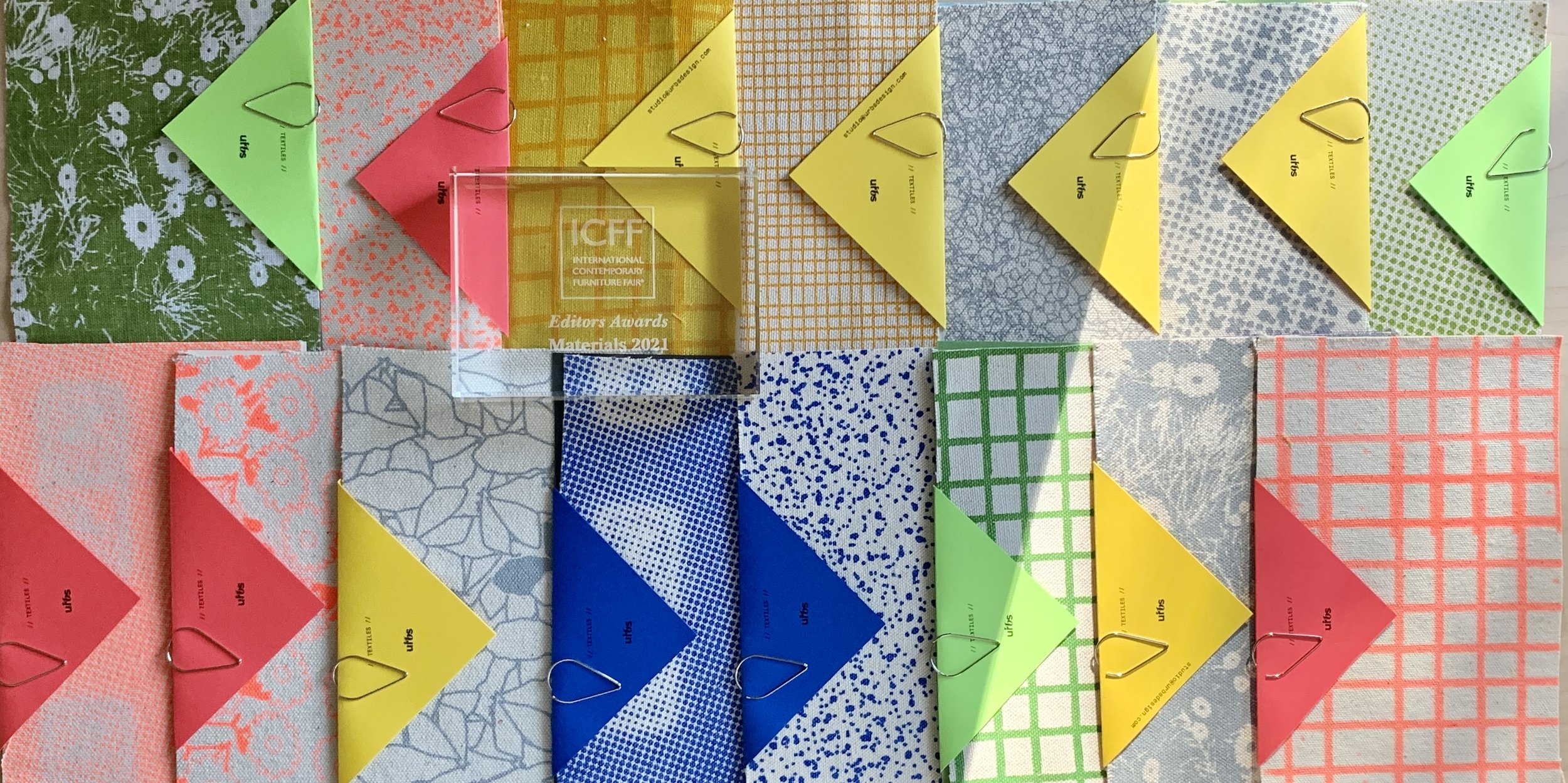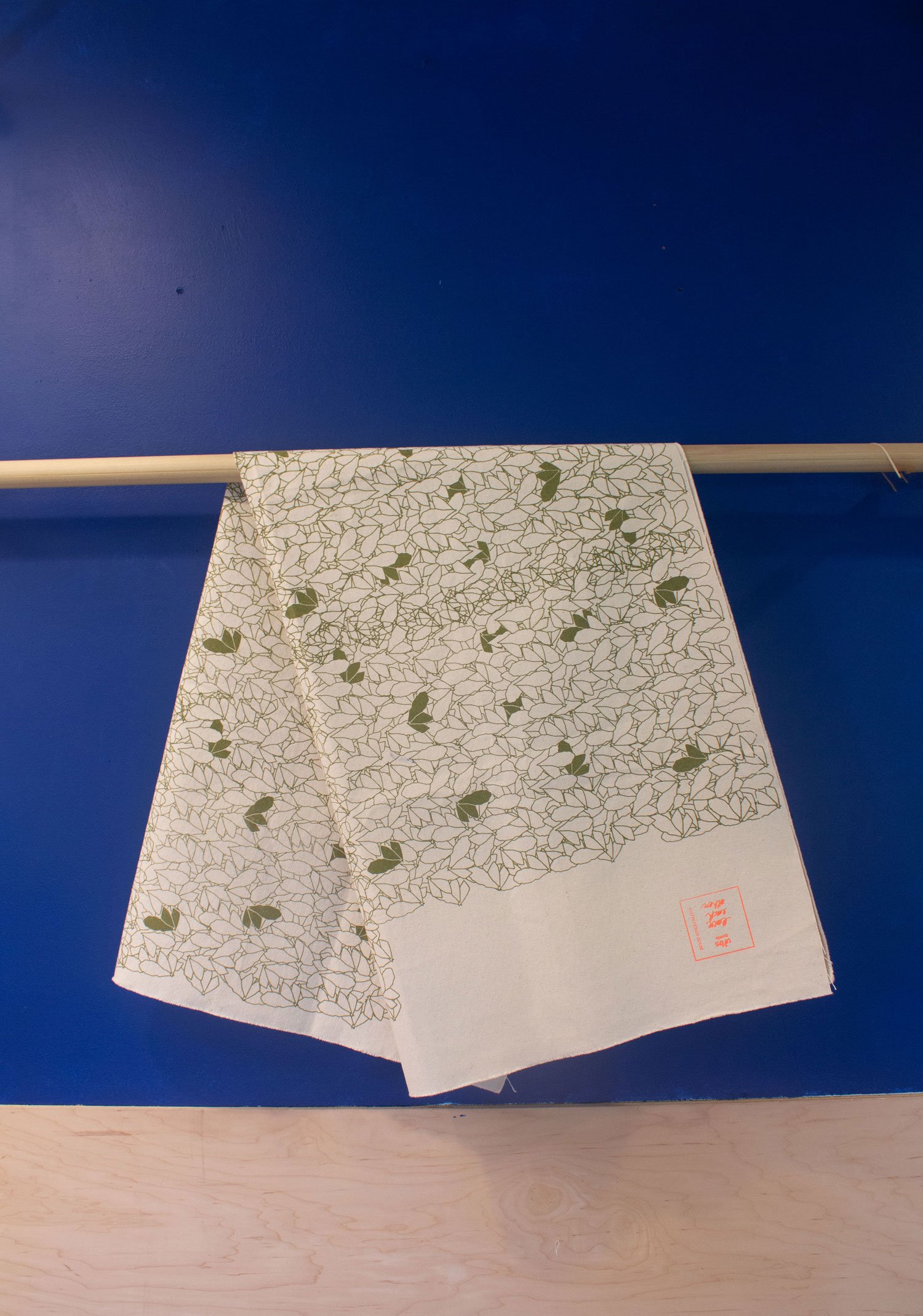Urban Textiles An Interview By Meghan Dwyer of ICFF
I was so thrilled to have won the editors choice award for my textiles. Meghan Dwyer of ICFF did an interview with me and gave a synopsis on their site. You can read that here
Below is the complete interview…
MD: Tell me about your company! When were you founded and what do you do?
AB: Urbs studio officially launched in 2019 as a project based studio. My husband Matt and I joined forces to work on self-directed projects that tell the story of urban life. The goal of the studio being simple, to create works that had no client boundaries and would allow us to play. After returning to Texas in 2015 I had just completed a children’s textile collection with Windham fabrics that was based on my children’s product line, Lille Huset. I loved working on the designs but I also wanted to start to think about textiles for the home. Having a background in printmaking and also feeling the need to make with my own hands again, I rented a studio space in east Austin and joined a printmaking co-op that allowed me to start printing. I immediately fell in love with printing on fabric, dusted off my sewing machine and also started sewing them into different products.
It was around the time when Matt and I were working on our home renovation in central Austin that I wanted to create textiles that made our home as unique as the place we were living. Textiles have the power to say something about the people and the place they were created, and I wanted what I made to connect with the people using them in a special way. I still remember the floral patterns on my grandmothers aprons growing up and they have a special place in my memory. There are so many beautiful textiles on the market but I wanted to create some that really spoke to urban life, which to me is unexpected and constantly changing. When I began, I was designing and printing for table top, but I knew that I also wanted to push myself into a larger scale pieces because textiles can really transform a space. As I began working at the larger scale, I really loved how the designs came alive. I began printing on natural cotton canvas which is super durable and a great fabric for the process I use. As a business I wanted to establish our textiles as bespoke and work with designers in this way. I also wanted to introduce fabrics that are circular as well as inks that are eco friendly.
MD: Where did you grow up? When was the moment you knew you wanted to be a designer?
AB: I grew up moving cities every 5 years or so. I arrived in Texas when I was 10 years old and lived in border towns to Mexico. Because we relocated so often, I tended to create my own world wherever we lived, almost like my own retreat. My childhood was spent largely making things, sewing and crafting projects for school. I knew I was a designer when I enrolled in college and chose to major in environmental design (architecture). The projects were so exciting and I was learning to see the world for the first time. The rational and creative were aligning and it was amazing. Matt and I met in our architecture studio in undergrad. We had both landed in this major not knowing anything about design. Growing up in Texas has very much informed the work that we do, whether it be textiles or other projects. I spent most of my grad school time in Chicago unpacking the stark difference between city life and sprawling suburban life. Matt and I clearly fell in love with the urban, and watching Austin begin to transform is extremely exciting. We are watching this place we have known for decades transform before our eyes and we get to be a part of that.
MD: What was the inspiration for Urbs?
AB: Urbs is latin for City; we felt this name was the strongest identifier for what we do. Urbs is an open ended, and somewhat free form, way for us to work on or collaborate on projects that excite us about urban spaces.
MD: Can you explain the different branches of the company?
I think of what we do as projects, mainly because we are so new and small. When we started the studio we didn’t know what direction it would go. We are truly very interdisciplinary and are constantly seeking answers to questions about how design is a part of the world in a very real way. Matt works full time in an architecture office doing affordable housing projects and I work in the studio on largely self directed works but am focusing on the textiles/design.
MD: Tell me about the textiles. Do you design all the patterns? Where and by who are they manufactured?
AB: After moving back to Texas, I joined a printmaking co-op in the city, where I began experimenting with fabric printing and creating designs. At the time I taught university design classes on the side, but wanted to keep developing screen printed textiles. I design all of the patterns and they are all inspired by the places we have lived or visited. Our collection is a very personal body of work that has been growing over the past six years. It wasn’t until the pandemic that I knew it was time for me to quit my teaching job and focus on the one thing that truly made me happy, textile design. I found that the printmaking part of my design process was almost like sketching. All of my work is developed on the press after working on base designs in the computer. All of my designs start with a hand sketch which I bring into the computer and manipulate for hours, and sometimes days and weeks using illustrator. Sometimes I have a word in mind that I am creating a pattern for, but other times it is political and other times just something I find beautiful.
When I am creating the patterns in the computer, I work only in black since this is how I will print the transparencies for screen printing. It isn’t until I am done making my screens and putting ink to press that I know if the print is visually working. I spend a lot of time experimenting with colors of fabrics and inks. I also mix all of the inks myself, so I obsess over colors and how to get the right shade based on the fabrics I am printing on. I have lots of prints that do not work, when this happens I wash up the screen and start again. Most of what I do is editing and trying to step outside of myself to critique the outcomes. As I develop prints and colors, I always want them to work together. At the end of every printing session, I stack my prints and snap a photo. This is my favorite part of printing, seeing them as an outcome that was 100% part of the process of work from that day. In my studio I hang the work up so I can be in constant back and forth about what to do next. After a printing session I introduce the new pieces to the existing. As you can imagine my space is incredibly messy but also insanely colorful! I love showing people the work in person because it really comes to life this way, you need to touch it and get lost in all the possibilities. I want my studio to inspire other peoples creativity and make them want to dive in and find the right prints for them.
MD: Do you do custom work?
AB: Yes, I do custom work for clients but it usually starts with some of the work I have already produced. I have dozens of original prints that I have developed over the years, and many in different scales or colors. Creating a brand new pattern or collection takes a lot of time and consideration of final application, but it is certainly something I do enjoy.
MD: Do you produce other furniture or products?
I design soft goods for table top, bags and recently designed a rug. I have a bit of an obsession with the bag specifically for urban use. When you walk out of your house your bag is your main accessory that has to be so functional and versatile. I also desperately need to see my fabric in application, so sewing samples is a critical part of my process. When I was working on this collection, I really wanted a piece of furniture to put the textiles on, but like any good design, you can’t rush it, so I am still searching for the right piece. Furniture for me is particularly exciting, I hope that in the near future I can collaborate with furniture designers.
MD: What patterns did you show at ICFF?
The collection I showed at ICFF is my most edited body of work. It included fifteen designs in six color ways, all named after aspects of living in the city. The names of the prints are based on different aspects of urban life; Patina, Encounter, Resilient, Grit, Open.. Open was one of my most recent prints, it is represented in a a way that makes it illegible from close up, but is also based on a signal of urban life, the “open”sign. It was during the pandemic that I realized the value of that ubiquitous symbol for representing a functioning place, our businesses are so important in our cities. As the world opened back up it gave me great comfort in knowing that people were beginning to get back to life and knowing that things are functioning, but the use of the small dots to create the sign also makes it ephemeral. All of the prints represent the evidence of human existence in a place in time.
MD: Where can people find your textiles?
Right now, since the collection is brand new, you can find them through me at urbsdesign.com. I want to keep the collection hand printed and bespoke, so designers can find that special piece for their unique space. I would also love to work larger and collaborate with manufacturers on bringing aspects of the collection or new designs to a larger audience.
MD: What was your favorite part of being at ICFF?
This year specifically was incredibly emotional. I created this line over the pandemic, and it had not seen the light of day, and I was also eager to get feedback. I had no idea how it would be received. I decided to take this incredible leap during a year when it was almost impossible to start a business. ICFF for me was the launch of my brand. All of that being said it was such an amazing experience, and one I did not know we would have the opportunity to do given the ongoing pandemic. My favorite part of participating is the morning of the first day of the show when all of the booths are assembled and everything looks so amazing, that moment makes me feel like I am part of something really special. I love design and events like ICFF bring designers together from all over to connect and share their work, which makes all of us better designers.




